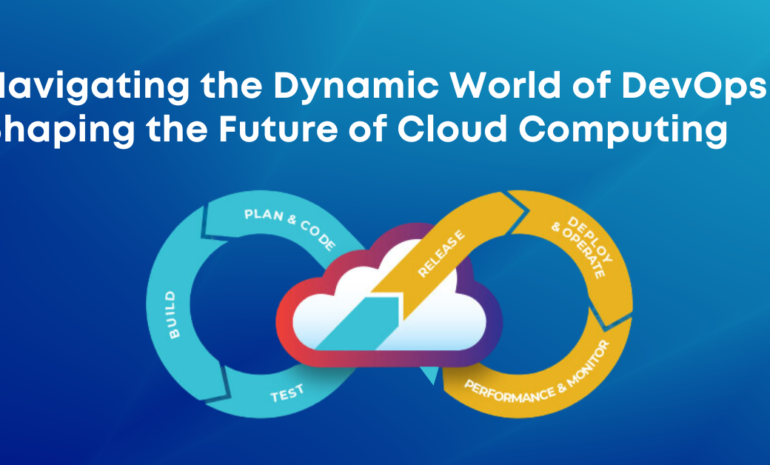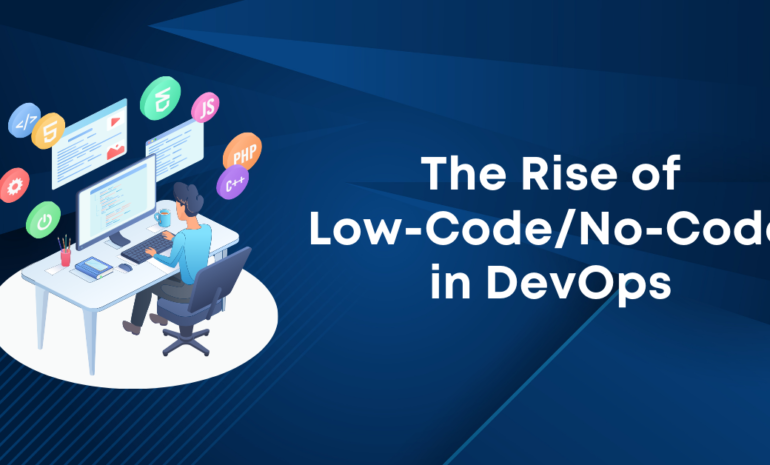Introduction
In today’s rapidly evolving technological landscape, staying ahead of the curve is crucial for organizations aiming to maintain their competitive edge. Nowhere is this more evident than in the intersection of DevOps and cloud computing. DevOps, a set of practices that combines software development (Dev) and IT operations (Ops) to shorten the systems development life cycle and provide continuous delivery of high-quality software, has become increasingly intertwined with cloud computing, offering organizations unparalleled opportunities for innovation, efficiency, and scalability.
The Importance of Collaboration in DevOps
At the heart of DevOps lies collaboration. It’s not just about breaking down silos between development and operations teams; it’s about fostering a culture of collaboration across the entire organization. By working together seamlessly, teams can deliver software faster, more reliably, and with fewer errors. This collaborative approach extends beyond the confines of an organization, encompassing partners, vendors, and even customers. Everyone involved in the software development process plays a crucial role in ensuring its success.
Key DevOps Trends
Serverless Computing: One of the most significant trends reshaping the DevOps landscape is serverless computing. This paradigm shift allows organizations to run code without the need to manage servers. Instead, cloud providers dynamically manage the allocation of machine resources, allowing developers to focus on writing code without worrying about infrastructure. This not only streamlines development but also reduces costs and improves scalability.
DevSecOps: With cybersecurity threats on the rise, integrating security into the DevOps process has become paramount. DevSecOps, an extension of DevOps, emphasizes the importance of security throughout the software development lifecycle. By incorporating security practices early and often, organizations can identify and remediate vulnerabilities before they escalate into full-blown security breaches.
Adoption of Amazon Web Services (AWS): As one of the leading cloud computing platforms, AWS has become synonymous with DevOps. Its extensive suite of services, ranging from compute and storage to machine learning and analytics, provides organizations with the tools they need to build, deploy, and manage applications at scale. By leveraging AWS, organizations can accelerate their DevOps initiatives, reduce time to market, and drive innovation.
The Impact of DevOps Trends on Cloud Computing
The adoption of DevOps trends has profound implications for cloud computing. By embracing serverless computing, organizations can offload the burden of managing infrastructure to cloud providers, allowing them to focus on delivering value to customers. Similarly, DevSecOps ensures that security is not an afterthought but an integral part of the development process, safeguarding organizations against cyber threats. And with the widespread adoption of AWS, organizations can harness the power of the cloud to drive innovation, scale rapidly, and stay ahead of the competition.
Adapting Trends for Optimal Cloud Strategies
Implementing DevOps trends requires more than just technological know-how; it requires a strategic approach. Organizations must carefully assess their current processes, identify areas for improvement, and develop a roadmap for adoption. This may involve investing in new tools and technologies, upskilling existing staff, and fostering a culture of continuous improvement. By aligning DevOps initiatives with business objectives, organizations can ensure that they derive maximum value from their investments in cloud computing.
Take serverless computing, for example. By transitioning from traditional server-based architectures to serverless architectures, organizations can achieve greater agility, scalability, and cost-effectiveness. This allows them to respond more quickly to changing market conditions, scale resources up or down as needed, and pay only for what they use. Similarly, DevSecOps enables organizations to build security into their applications from the ground up, rather than treating it as an afterthought. This not only reduces the risk of security breaches but also instills confidence in customers and stakeholders.
Looking Towards the Future
As the pace of technological innovation continues to accelerate, organizations must stay ahead of the curve to remain competitive. This means not only embracing current DevOps trends but also anticipating future ones. Technologies like serverless computing and DevSecOps are just the tip of the iceberg; new trends and paradigms are emerging all the time, reshaping the way we build, deploy, and manage software.
One trend that is likely to gain traction in the coming years is edge computing. With the proliferation of Internet of Things (IoT) devices and the rise of real-time applications, organizations are increasingly looking to process data closer to the source, rather than relying on centralized cloud infrastructure. Edge computing promises to bring compute resources closer to the end user, reducing latency, improving reliability, and enabling new use cases in areas like autonomous vehicles, smart cities, and augmented reality.
Another trend to watch is the convergence of DevOps and artificial intelligence (AI). As AI and machine learning become increasingly integrated into software development workflows, organizations are exploring new ways to automate repetitive tasks, improve decision-making, and optimize resource allocation. From automated code generation to intelligent test automation, AI promises to revolutionize the way we build software, making development faster, more efficient, and more resilient.
Partnering with DevOps Experts
Navigating the complex landscape of DevOps and cloud computing can be daunting, especially for organizations with limited resources or expertise. That’s where partnering with DevOps experts like CloudHesive can make all the difference. With years of experience helping organizations of all sizes harness the power of the cloud, CloudHesive offers a range of services and solutions tailored to meet the unique needs of each client. From strategy and planning to implementation and optimization, CloudHesive provides end-to-end support at every stage of the DevOps journey.
By partnering with CloudHesive, organizations can accelerate their DevOps initiatives, reduce risk, and drive innovation. Whether it’s migrating to the cloud, optimizing existing workloads, or implementing cutting-edge technologies like serverless computing and DevSecOps, CloudHesive has the expertise and experience to help organizations achieve their goals.
Conclusion
In conclusion, the intersection of DevOps and cloud computing represents a tremendous opportunity for organizations to drive innovation, improve efficiency, and stay ahead of the competition. By embracing current trends like serverless computing, DevSecOps, and AWS, organizations can unlock new levels of agility, scalability, and cost-effectiveness. Looking towards the future, the convergence of edge computing, AI, and other emerging technologies promises to usher in a new era of possibilities, reshaping the way we build, deploy, and manage software. And by partnering with DevOps experts like CloudHesive, organizations can navigate this rapidly evolving landscape with confidence, driving success in the digital age.




